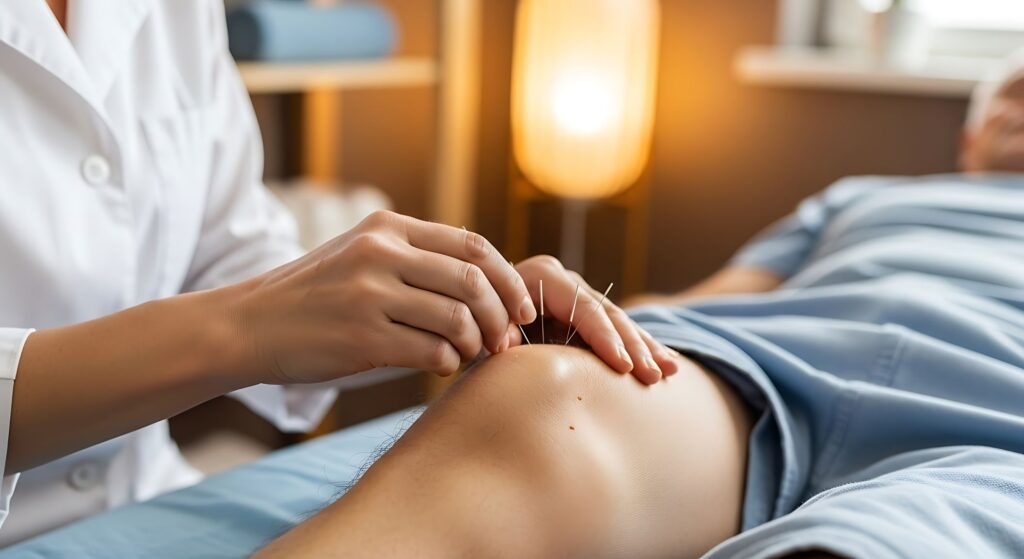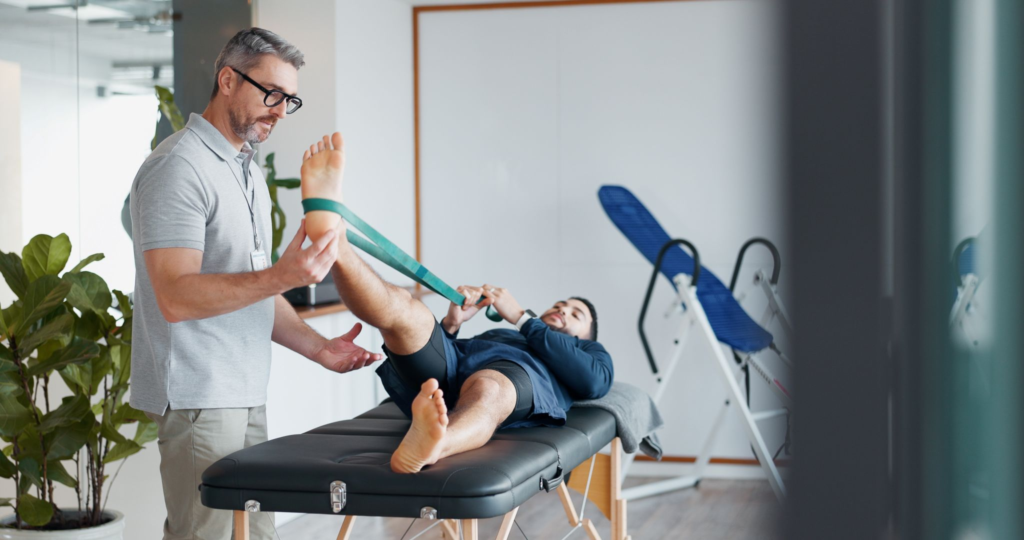It happens to the best of us. One minute, you’re pushing your limits; next, you’re on the ground, facing crippling pain. As the dust settles, the seriousness of the matter hits you. You start crossing your fingers, hoping that your healing journey doesn’t take longer than it should.
While medical intervention is the foundation for recovery, integrating natural and complementary therapies can boost the process. So, don’t be surprised if your orthopedic specialist inserts natural treatments into your sports injury rehabilitation program.
Your Body’s Healing Timeline
Individuals respond to injuries and treatments differently. There are no guarantees that you’ll be your best self in no time, especially if you’ve obtained severe ligament tears and cartilage injuries. Surgery is recommended in serious cases and thus requires longer recuperation.
With that said, it helps to know what your body needs during the different phases of injury recovery.
Immediate Support (Up to five days)
Your body’s immune cells rush to the site immediately after the accident. This initial healing phase could last up to five days and is marked by pain and swelling. The RICE (rest, ice, compression, and elevation) protocol is highly useful to reduce discomfort and inflammation caused by common sports injuries, including anterior cruciate ligament (ACL) or ACL tears. That’s why many athletic teams have ice compression machines to help with post-training or injury recovery.
Medium-Term Support (five days to a few weeks)
New tissue starts forming after five days or so. You may begin to feel better, but the area is still fragile. You can perform specific stretching exercises for joint and soft tissue mobilization. Your chosen physical therapists can introduce light resistance exercises while monitoring your form to prevent the site from getting hurt again. Complex exercises aren’t advisable.
Long-Term Support (weeks to months)
Your body is constantly fine-tuning the repair process for a few weeks to months following the injury. At this stage, the newly-formed scar tissue strengthens.
Your goal is to regain strength and coordination to facilitate a safe return to full activity. This is the best time to introduce certain exercises by body area, for instance, core strengthening or knee strengthening movements, to help your body stay resilient against future injuries.
Each phase of healing benefits from different types of support. To make the most out of these natural processes, work with a specialist who understands your body’s natural rhythm and implements effective training techniques at the right time.
Acupuncture
As one of the most studied components of Traditional Chinese Medicine, you’ve probably heard that acupuncture benefits chronic inflammatory conditions and certain symptoms. This needle-based therapy, which is recognized in sports medicine, increases blood flow and triggers endorphins, the body’s natural painkillers. That’s why it’s so great at releasing muscle tension and relieving sprains and strains.
Such advantages make it a great complementary treatment for sports injuries. For example, if you’re struggling with persistent pain that makes other therapies challenging, a licensed acupuncturist may offer natural relief so you can remain consistent with your rehab programs.

Physical Therapy
When an injury occurs, two of the biggest hurdles are reducing swelling and restoring mobility. Hands-on treatments for core stability and tissue flexibility are helpful in these situations. That said, treatment plans often involve physical therapy for faster recovery.
It’s best not to wait for weeks to start looking for sports rehab services. Seek professional sports physiotherapists as early as possible to help prevent stiffness and muscle loss. These healthcare providers can perform manual therapy and develop sports rehabilitation exercises using resistance bands and therapeutic tapes. Therapists can also provide proprioception training to rebuild strength and coordination safely.
Chiropractic Care
The human body can go haywire with impact injuries. That’s why some sports injury rehabilitation programs include chiropractic care. Chiropractors focus on realigning the spine and other joints, and can help patients recovering from a shoulder injury. Keeping your joints in order reduces unnecessary stress on the injured ligaments and muscles. It sets the best environment for healing.
Apart from spinal and joint adjustments, they tap other methods like soft tissue therapy and can recommend stretches to improve strength and range of motion.
Proper Nutrition
When it comes to repairing your body, you can’t rebuild tissues without raw materials. Loading up on protein is essential. As the body’s building blocks, proteins can fix damaged muscles, tendons, and ligaments. Some studies show that consuming certain amino acids may help support longevity. Ensure you’re consuming enough lean protein, like skinless poultry and plant-based choices like tofu.
Inflammation is the body’s first response to an injury. But it can slow down healing the longer it stays. To counter this, increase your intake of anti-inflammatory foods like leafy greens and omega-3-rich fish. Doing so helps your body regulate its response without the need for constant medication. Hydration matters, too, as water helps transport nutrients and flush out waste.
As you are probably taking certain medications, it’s best to discuss supplements with your doctor or registered dietitian. They can ensure that these additions won’t interact with your medicines and can, in fact, help hasten instead of delaying your recovery.
Reinforcing the Mind and Body Connection
Anyone who has gone through sports and exercise-related injuries knows that the process is both physical and psychological. Recovering from an injury can be mentally taxing. Feeling frustrated and anxious is normal, particularly for athletes who are used to moving a lot. Unfortunately, negative emotions can slow down your physical progress.
Besides cultivating a supportive environment, an injured athlete can practice mindfulness and meditation to manage the stress of recovery. A mental health practitioner can be a worthy addition to your medical team. Yoga and certain breathing exercises help lower cortisol and create a better internal environment for recovery. They also improve mental resilience to help you adhere to challenging recovery protocols in and out of the rehabilitation center.
Some elite athletes also use visualization to maintain their edge. A sports player can imagine the injured area healing and them successfully performing complex maneuvers and intense movements. This technique is a powerful way to prepare for a powerful comeback.
Final Thoughts
Combining scientific and natural remedies proves that medical and alternative therapies don’t clash, but rather, complement each other. As such, the best sports rehabilitation programs aim to improve the body’s innate healing power using proven therapies.
So, if you’re recovering from a sports injury, don’t just wait it out. Be proactive and seek experts from different fields. Taking a collaborative approach with your healthcare team ensures your journey is built on solid foundations.
Most importantly, nourish your body and explore the therapies that can help you heal holistically. In doing so, you’ll not only bounce back, but you’ll come back stronger.
